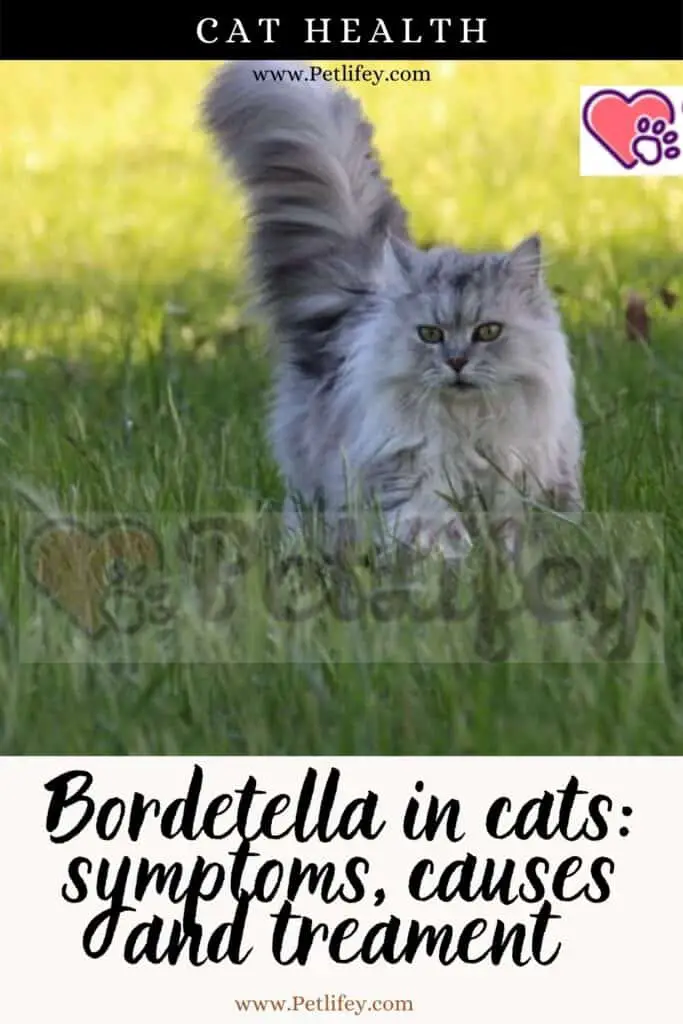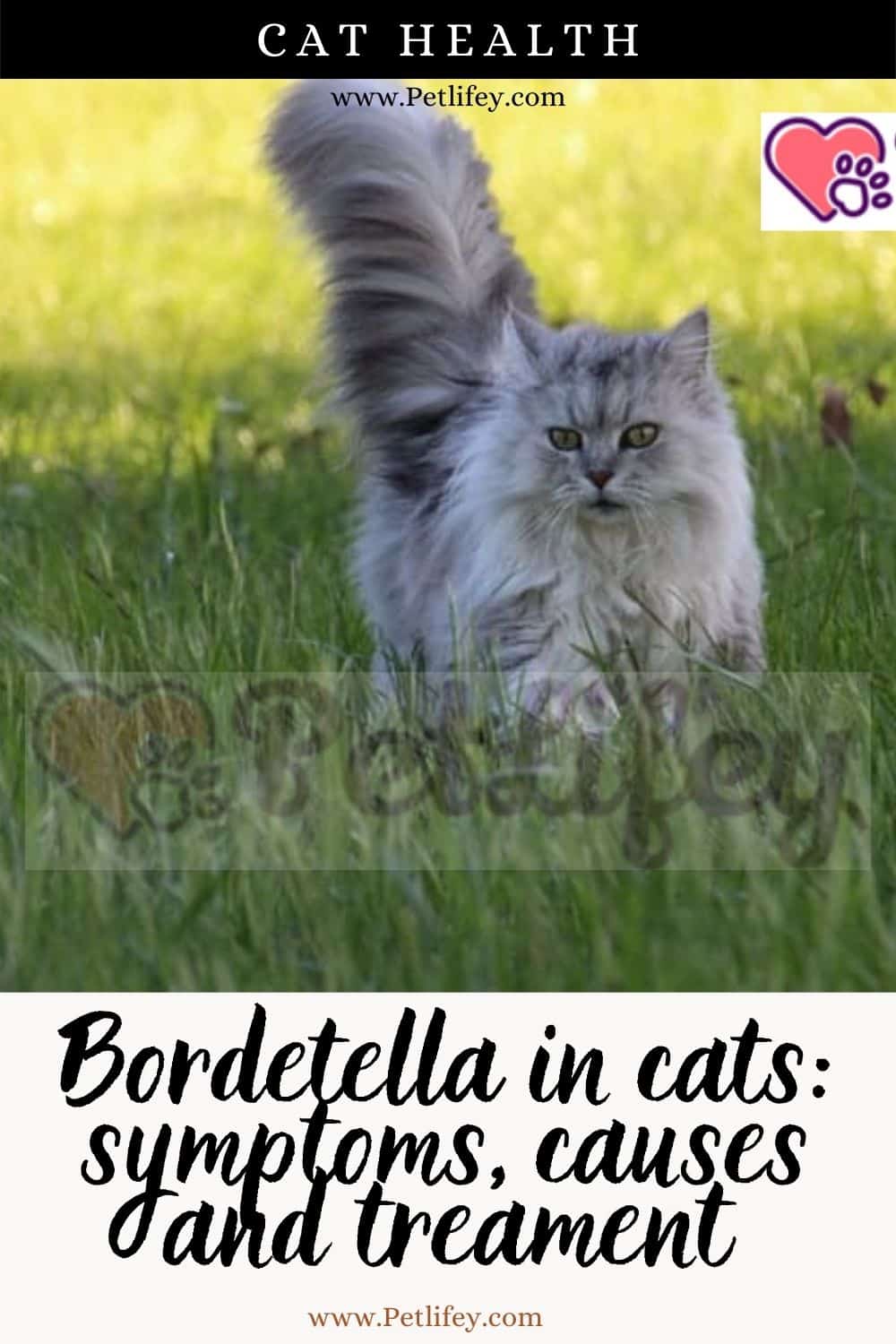Bordetella in Cats: Understanding Symptoms, Causes, and Treatment Options

Bordetella bronchiseptica is a type of bacteria that can cause respiratory infections in cats. While this pathogen is more commonly associated with kennel cough in dogs, it is also a notable cause of illness in the feline population, particularly those living in close quarters, such as shelters or catteries. If your cat is displaying symptoms like coughing, sneezing, runny eyes, or nasal discharge, it may be indicative of a Bordetella infection. These signs can also be accompanied by fever, lethargy, and loss of appetite, signaling the need for a prompt veterinary assessment.

Understanding the causes of Bordetella is crucial in preventing the spread within a cat community. The bacteria are highly contagious among cats, especially when they are in close contact. It can be transmitted through aerosols, direct contact, or even via contaminated surfaces. Kittens, senior cats, or those with a compromised immune system are particularly susceptible to the infection. It’s not only about keeping an infected cat isolated; vaccination and maintaining hygienic environments are key preventive measures to protect your pet and others.
When it comes to treatment, early intervention can make a significant difference in the outcome. The course usually involves antibiotics to combat the bacterial infection and may include supportive care such as clearing nasal passages and giving sufficient fluids to prevent dehydration. In more severe cases, where the infection progresses to pneumonia, additional treatments such as nebulization or even hospitalization for intensive care may be necessary. Your veterinarian can provide the best treatment plan based on your cat’s specific condition. Regular check-ups and following the prescribed treatment regimens are essential steps in helping your cat recover from Bordetella.
Understanding Bordetella in Cats

Bordetella bronchiseptica is an important bacterial pathogen in cats that you need to be informed about. This section will guide you through its characteristics to better understand the infection and its relevance to cats.
Characteristics of Bordetella Bronchiseptica
Bordetella bronchiseptica is a small, aerobic bacterium that primarily affects the respiratory system of various species including cats, dogs, rabbits, and pigs. It is highly contagious and can be spread through direct contact or airborne transmission from infected animals. This bacteria can cause a condition known as Bordetella infection or tracheobronchitis.
- Reservoir and Transmission: The bacterium is part of the natural respiratory flora in some animals and can be transmitted to others when infected animals cough or sneeze, releasing respiratory secretions. You should be aware that Bordetella bronchiseptica is a zoonotic agent, meaning it has the potential to spread from animals to humans, though such cases are rare.
- Symptoms in Cats: Infected cats may exhibit a range of symptoms, varying from mild to severe. These typically include coughing, sneezing, nasal discharge, and in more severe cases, pneumonia. Secondary infections can also occur, which may complicate the symptom profile.
- Vaccination: There is a vaccination available to help prevent Bordetella infections in cats. The vaccine is often recommended for those living in multi-cat households, shelters, or for those who regularly come into contact with other animals.
By comprehending the characteristics of Bordetella bronchiseptica, you can better understand the risks it poses to your cat and take appropriate measures to prevent transmission and ensure their health.
Symptoms of Bordetella

Bordetella bronchiseptica in cats primarily manifests through notable respiratory symptoms, but can also affect your cat’s general well-being and behavior.
Respiratory Symptoms
Your cat may exhibit various signs indicating a respiratory issue caused by Bordetella infection:
- Coughing: Persistent cough that may sound harsh or dry.
- Sneezing: Intermittent or mild sneezing that can be frequent.
- Nasal Discharge: Clear or colored mucus from the nose.
- Ocular Discharge: Watery or pus-like discharge from the eyes, often referred to as runny eyes.
These symptoms suggest an upper respiratory illness that, if left untreated, can develop into a more severe respiratory disease.
Non-Respiratory Symptoms
Besides the clear respiratory signs, there are other symptoms not directly related to the respiratory system, which include:
- Fever: Elevated body temperature, which might indicate an infection.
- Lethargy: Decreased activity levels or showing signs of fatigue.
- Appetite: Lower than usual appetite, leading to reduced food intake.
These general symptoms can impact your cat’s overall health and are critical cues not to ignore.
Causes and Transmission
Bordetella bronchiseptica is the primary bacterial agent responsible for the respiratory infection in cats, which is highly contagious and can spread through various channels.
Direct Contact and Environmental Factors
Direct Contact: The transmission of Bordetella in cats often occurs through direct contact with infected animals. This includes:
- Saliva: When an infected cat coughs or sneezes, the bacteria can be present in the saliva, which can spread to other cats.
- Shared Bedding and Bowls: Contaminated objects like bedding, bowls, or toys can harbor the bacteria. When your cat comes into contact with these objects, they are at risk of contracting the infection.
Environmental Factors: Environmental cleanliness is vital in controlling the spread of Bordetella. Regularly disinfecting living areas and maintaining good hygiene helps minimize the risk. The bacteria can survive in the environment for a period, making it crucial to keep your cat’s surroundings clean.
Role of Stress and Crowded Conditions
Stress: Stress can weaken a cat’s immune system, making them more susceptible to infections like Bordetella. Stressful situations for a cat might include changes in their environment or the introduction of new animals to the household.
Crowded Conditions: Cats living in shelters or overcrowded conditions are particularly at risk of Bordetella due to increased exposure to other potential carriers. In such conditions, quick and efficient isolation of affected animals, along with rigorous cleaning routines, is essential to control the outbreak of this highly contagious disease.
Diagnosis of Bordetella Infection
The effective regulation of Bordetella infection in your cat revolves around precise diagnostics that your veterinarian will initiate, guided by clinical signs and laboratory tests.
Laboratory Tests and Procedures
When you bring your cat to a veterinarian for suspected Bordetella infection, the vet will usually begin with a physical examination to assess the overall health status and to look for specific symptoms such as coughing, sneezing, and nasal discharge. Following this, certain laboratory tests and procedures are essential for a definitive diagnosis.
A primary diagnostic test is Polymerase Chain Reaction (PCR). This test can detect the presence of Bordetella bronchiseptica DNA in nasal secretions. To perform PCR, the veterinarian might collect a sample of your cat’s nasal discharge.
Bacterial culture and sensitivity testing are also commonly employed to identify the Bordetella bacteria and to determine the most effective antibiotic for treatment. In bacterial culture, a sample from your cat’s nasal secretions or from the throat can be taken and then grown in a lab to check for bacterial growth.
Alongside these tests, the vet may use X-rays to visualize the lungs and check for signs of pneumonia or other respiratory issues often associated with Bordetella. Blood tests can provide a broader picture of your cat’s overall health and help rule out other potential causes of the symptoms.
Each of these tests contributes to forming a full picture of your cat’s health and is critical in confirming the presence of a Bordetella infection. Your vet will interpret these results and recommend the appropriate treatment based on their findings.
Treatment Options for Bordetella
When your cat is diagnosed with Bordetella, effective treatment options include targeted antibiotics and supportive care measures to manage symptoms and prevent the spread of the infection.
Antibiotic Therapy
Your veterinarian will likely prescribe antibiotics to treat the Bordetella infection in your cat. The choice of antibiotic will depend on the specific circumstances and may include:
- Doxycycline: This is commonly used and effective against a range of bacteria.
- Fluoroquinolone antibiotics: These medications may be considered if there’s a need for a broader spectrum antibiotic or if the bacteria show resistance to other treatments.
It’s critical to follow the dosage instructions and complete the full course of antibiotics, even if your cat appears to improve before the medication is finished.
Supportive Care and Hospitalization
In addition to antibiotics, supportive care is essential to ensure your cat’s speedy recovery, which may involve:
- Hospitalization: If your cat is severely affected, they may require intensive care at a veterinary hospital.
- Hydration: Fluid therapy can help if your cat is dehydrated.
- Nebulization: Humidified air can ease breathing difficulties.
- Nutrition: Proper nutrition supports the immune system.
Remaining vigilant about your cat’s care during treatment is vital for recovery and preventing reinfection. Keep the living area clean with appropriate disinfectants and minimize stress for your cat. In some cases, a vaccine may be available as a preventive measure, though its use is more common in shelter situations than in private homes. If ever in doubt, consult your vet for the best course of action.
Preventing Bordetella in Cats
To safeguard your feline friend from Bordetella, a proactive approach focusing on vaccination and maintaining a clean environment is essential.
Vaccination and Disease Prevention
Vaccination is a powerful tool in the prevention of Bordetella infections. It is particularly beneficial in environments where cats are at higher risk of infection, such as catteries or animal shelters.
- Primary Vaccination: Your veterinarian can administer the Bordetella vaccine to your cat as part of their routine vaccination program. Usually given to kittens, the initial vaccine helps to establish immunity.
- Booster Shots: Regular booster vaccinations are necessary to maintain immunity. The frequency of these boosters varies, so consult your vet for an appropriate schedule.
Remember, while vaccination greatly reduces the risk of disease, it does not guarantee complete prevention. It is still important to implement good hygiene practices.
Environmental Management and Hygiene
Maintaining a clean environment is crucial in preventing the spread of Bordetella, as the bacteria can persist on surfaces.
- Daily Cleaning: Disinfect food and water bowls daily. Frequent cleaning of litter boxes and living spaces helps minimize the bacterial load in the environment.
- Bedding: Regularly wash your cat’s bedding in hot water to eradicate any lingering bacteria.
- Quarantine: In multi-cat environments, promptly quarantine any cats showing symptoms of illness to prevent spreading it to healthy cats.
By adhering to a strict vaccination schedule and upholding rigorous cleanliness standards, you can significantly reduce your cat’s risk of contracting Bordetella.
Understanding Feline Bordetella and Human Health
Bordetella bronchiseptica in cats is a concern for pet owners not only for the health of their feline friends but also for its potential implications for human health, particularly in immunocompromised individuals.
Zoonotic Potential and Awareness
Bordetella bronchiseptica is primarily known as a respiratory pathogen in cats, causing symptoms like coughing and sneezing. It is important for you to understand that while Bordetella bronchiseptica is closely related to Bordetella pertussis—the agent of whooping cough in humans—it is generally not considered a typical cause of respiratory illness in healthy humans.
However, due to its zoonotic potential, immunocompromised individuals, such as those with a weakened immune system, could be at risk. Awareness of zoonosis, which refers to the transmission of diseases or infections between animals and humans, is crucial for public health. While transmission of B. bronchiseptica from cats to humans is relatively rare, it is considered a contagious pathogen among animals.
It’s imperative to maintain good hygiene practices when handling pets with Bordetella and to consult healthcare providers if a pet is diagnosed with the illness. This includes regular hand washing and avoiding close contact like allowing your pet to lick your face. If you are immunocompromised, you may need to take additional precautions to protect your health.
Being informed and vigilant can help ensure that the impact of feline Bordetella on public health is minimal.
Prognosis and Living with Bordetella
When your feline friend is diagnosed with Bordetella, understanding the prognosis and adapting to living with this respiratory illness is critical. Effective management can improve your cat’s quality of life and alleviate symptoms, even with potential chronic conditions.
Managing Long-Term Health and Wellbeing
Bordetella, if caught early and treated properly, often has a good prognosis. The key to managing this illness is to support your cat’s immune system and maintain vigilant health monitoring, which will contribute to a positive outcome.
- Immune System Support: Ensuring your cat has a robust immune system is essential in the fight against Bordetella. This may involve:
- A balanced diet rich in nutrients
- Regular vaccinations as recommended by your veterinarian
- Minimizing stress, as stress can weaken the immune system
- Health Monitoring: Close observation of your cat’s behavior and symptoms is important for managing Bordetella. Keep an eye out for:
- Changes in appetite or activity levels
- Persistent coughing or sneezing
- Signs of breathing difficulties
Prompt veterinary care can mitigate the risk of complications such as pneumonia. With proactive management and care, many cats with Bordetella maintain a high quality of life.







